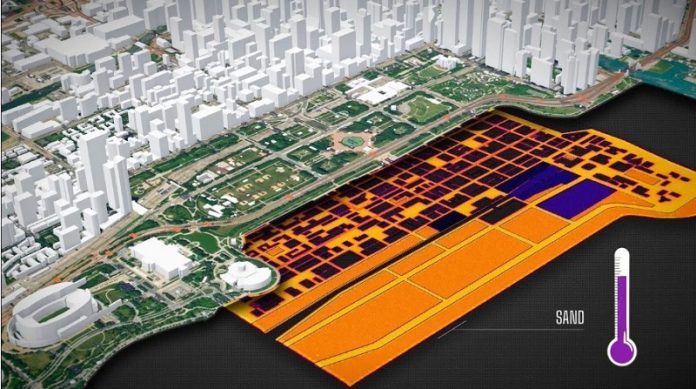
A recent study from Northwestern University has uncovered a link between underground climate change and the shifting ground beneath urban areas.
As temperatures rise, the ground beneath our buildings and infrastructure deforms, leading to excessive movement and even cracks.
This poses long-term challenges for the durability and performance of our structures.
However, researchers also see an opportunity to mitigate these effects and tap into an untapped energy resource by harnessing the waste heat emitted underground.
The term “underground climate change” or “subsurface heat islands” refers to the alarming warming of the shallow subsurface beneath cities.
Heat from buildings and underground transportation systems causes the ground to warm at a significant rate. This phenomenon has already been linked to ecological and health issues, but its impact on civil infrastructure has remained largely unexplored until now.
Led by Alessandro Rotta Loria from Northwestern’s McCormick School of Engineering, researchers installed a wireless network of temperature sensors across Chicago’s Loop area.
They measured temperatures above and below ground, including basements, subway tunnels, and underground parking garages.
The data revealed that underground temperatures in the city center can be up to 10 degrees Celsius warmer than those in adjacent areas like Grant Park. The increased heat diffusion places stress on materials that expand and contract, leading to ground deformations.
Over a period of three years, temperature data was collected and used to create a 3D computer model simulating ground temperature changes from 1951 to the present.
The simulations demonstrated that rising temperatures can cause the ground to swell and expand upwards by as much as 12 millimeters.
Conversely, it can contract and sink downwards beneath the weight of a building by up to 8 millimeters.
Although these changes may seem insignificant, they can have severe consequences for infrastructure performance, compromising building foundations over time.
While existing buildings were not designed to withstand underground climate change, modern structures fare better due to updated construction practices.
However, cities with older buildings, especially those made of stone or bricks, may be more susceptible to the effects of subsurface heat islands.
To address these challenges, future planning strategies should integrate geothermal technologies to harvest waste heat from underground sources and reuse it for space heating. Thermal insulation can also be installed in buildings to minimize the amount of heat that enters the ground.
The study on underground climate change sheds light on a previously unnoticed threat to our urban infrastructure.
As temperatures rise, the ground beneath our feet undergoes changes that can compromise the long-term performance of buildings and infrastructure.
By recognizing the challenges and incorporating geothermal technologies and effective insulation, we can mitigate the impacts and harness waste heat as a valuable energy resource.
Understanding this hidden hazard will pave the way for sustainable urban development, ensuring the resilience and longevity of our cities.
Follow us on Twitter for more articles about this topic.



